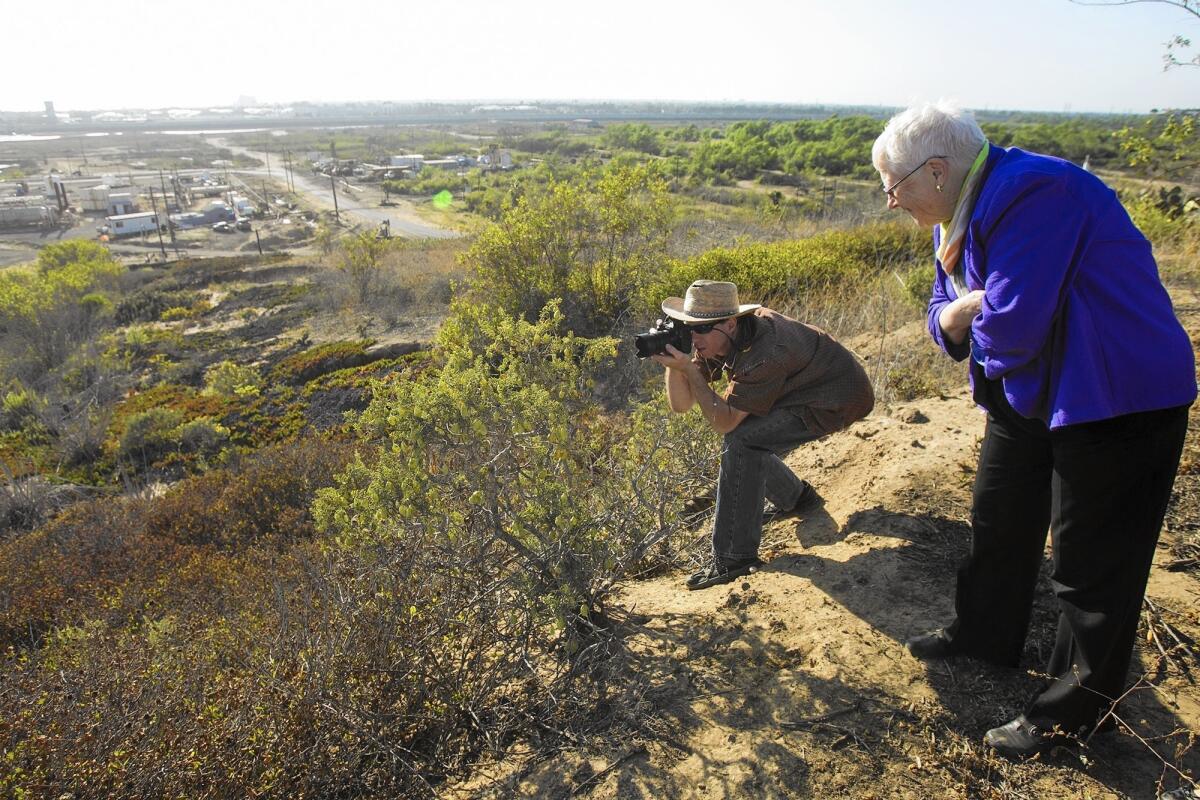Scaled-back Banning Ranch homes, hotel and retail plan goes to Coastal Commission

- Share via
The developer looking to build homes, retail space and a boutique hotel on part of the 401-acre Banning Ranch has submitted scaled-down plans for the project to the California Coastal Commission.
The 12-member state body, which has final say over projects along California’s coast, sent Newport Banning Ranch LLC back to the drawing board after an eight-hour hearing in October to make significant cuts to the project’s footprint and scope. The commission is expected to consider the development at a hearing in January.
In November, the developer sent the Coastal Commission the scaled-back plans, which propose 895 homes, a 75-room hotel, a hostel and 45,100 square feet of retail on about 62 acres of Banning Ranch, which sits adjacent to the Santa Ana River overlooking West Coast Highway. About 280 acres would be preserved as natural open space, with the rest used for parks and parking, plans show.
The amount of soil grading proposed for the property also was decreased, documents show.
Newport Banning Ranch originally proposed 1,375 homes, 75,000 square feet of retail space, a hostel and several parks on about 95 acres. That plan was approved by the Newport Beach City Council in 2012.
Coastal Commission staff expressed opposition to the proposal during the October meeting and in a report, noting that the land is home to “sensitive coastal species” including the threatened California gnatcatcher, along with a rare vernal pool system and one of the few remaining significant areas of native grassland.
However, staff and commissioners suggested they likely would favor a “less-intense” development. They also cited merits of the project, including opening the land for public use and condensing oil operations that have long occupied the site.
“There is definitely a project here,” Commissioner Wendy Mitchell said at the time. “I’m hopeful that eventually we can get something that will make everyone a little unhappy and everyone a little happy.”
However, some preservationists remain steadfastly opposed to development of the site.
The Banning Ranch Conservancy, a nonprofit group, has butted heads with the developer and the city over the land for three years.
After the City Council approved the proposal, the conservancy filed a lawsuit alleging that the city had violated its general plan, which prioritizes open space in West Newport.
The conservancy argued that the city did not work with the Coastal Commission in prioritizing specific areas of preservation, in violation of city law. The group also alleged that the project’s environmental report did not detail mitigation measures for the development’s potential effects, according to court documents.
The case has made its way through Orange County Superior Court and California’s 4th District Court of Appeal and will next be heard by the California Supreme Court on an undetermined date.
The conservancy has raised about $5 million in an effort to buy the property and is looking at other funding sources. A 2008 study from the city estimated the property’s value at $184 million to $211 million.
If the Coastal Commission approves the project, the plans would go before the City Council again. The developer estimates that work could begin by 2017.
“We’re proposing to take a piece of property that’s been fenced off for 75 years and open it to the public,” said George Basye, president of Newport Banning Ranch Land Trust, a nonprofit created by the developer to preserve and maintain the open space. “Without an approval, it would stay closed, and we think that’s a shame.”




